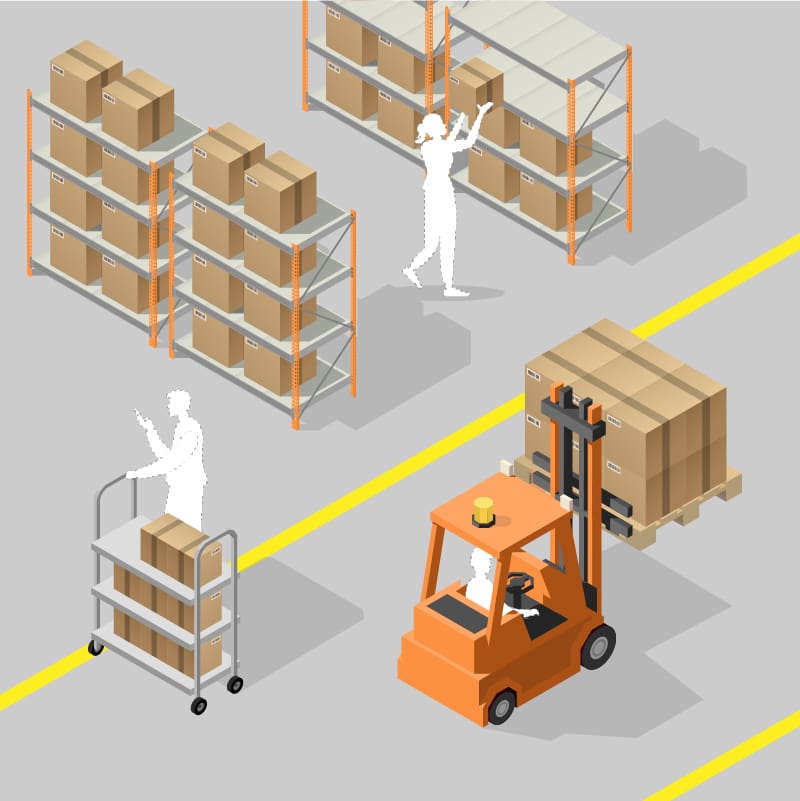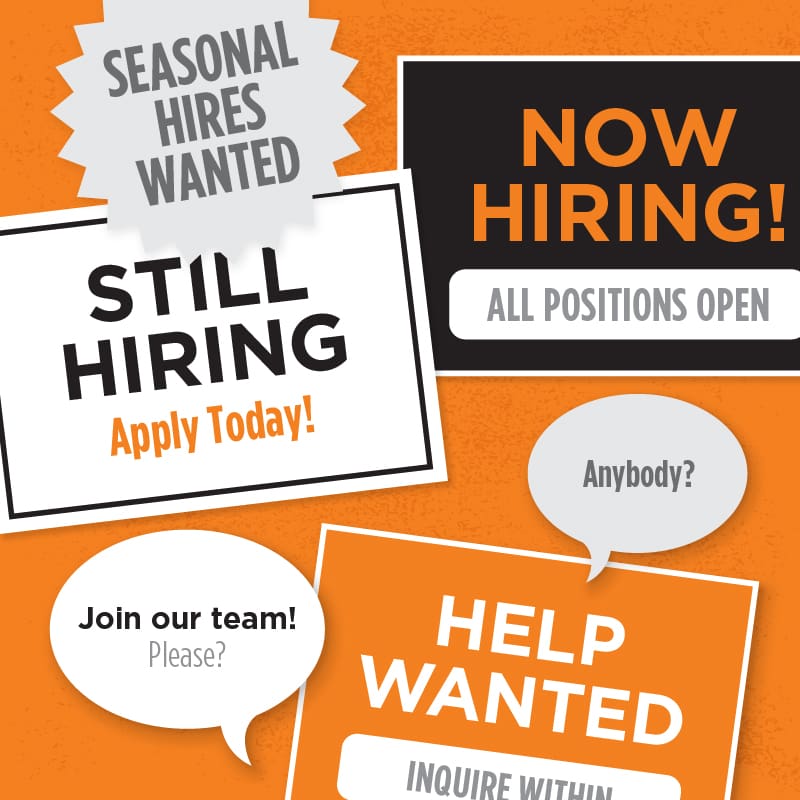Author’s note: This series is in collaboration with our technology partners TZA and Rufus Labs. Their thought-provoking examples, perspectives, labor management strategies, and warehouse technologies can help you manage through a tough hiring market.
The industry’s worst-kept secret
The systems driving our warehouse or facilities have never been more advanced. We’re using automation, robotics, and AI-driven shipping management. We’re enjoying the amazing contributions that technology has brought to the warehouse. Supply chains are quick to adopt a competitive advantage; but, focusing on how advanced facilities have gotten will often mask an issue as old as the profession itself.
Labor management problems, everyone’s got them
Did you know 68% of mid-market businesses are struggling to attract talent?
 Over the last 3 years for many, business didn’t slow down. Demand may have increased. You’re dealing with labor shortages and supply issues amid changing customer preferences and erratic demand. You need to produce more from the people you’ve got because nobody can find workers.
Over the last 3 years for many, business didn’t slow down. Demand may have increased. You’re dealing with labor shortages and supply issues amid changing customer preferences and erratic demand. You need to produce more from the people you’ve got because nobody can find workers.
How do you make the most of your greatest constrained resource? We have a few ideas…
Right the first time: error-proof your process
Inventory fulfillment errors are incredibly costly to supply chain operations.
In a leaned-out operation with a low profit margin, it doesn’t take more than a few errors to turn batches of orders unprofitable. Increasing the speed needed to meet customers’ quick-turn preferences just exacerbates the problem.
There’s no way to recoup the cost; you can only incur the cost of rework. Productive labor hours wasted, good money after bad. Labor management is the only proven winner when it comes to not putting yourself in that position from the start.
A warehouse management system like Deposco’s Bright Warehouse incorporates error prevention directly into the processes to improve labor management. Scan checks occur at each action. The pick wave can’t proceed until the right action is performed, and the right SKU is scanned. Another benefit? Ensuring task accuracy ensures inventory accuracy.
“Warehouse operations is a symphony. Every worker needs high-quality ‘instruments’ to perform at an elite level. For preventing errors, increasing productivity, and minimizing downtime, advanced wearables keep things in harmony. Best-in-class wearables have been shown to reduce error rates by 35%.”
— Paula Odysseos, Co-founder and SVP Partnerships, Rufus Labs, a company that builds wearable barcode scanners
Ensuring process accuracy drives incredible benefits for the warehouse. Workers aren’t frustrated redoing work. You aren’t paying for rework. Your customer gets what they want the first time with minimal overhead.
And, ultimately, you don’t have to fix something that didn’t go wrong.
Labor management: data knows best
As labor management systems (LMS) and warehouse software have evolved, operations teams have benefited from incredible business intelligence.
All labor management is tracked in these systems from the time spent on tasks, to error rates, to the productivity of each team member. Advanced analytics underscore high-effort SKUs and where the process lags. Leveraging that data to drive improvement may seem daunting. You must make this data work hard for you.
Your team is motivated – individually and collectively – to achieve more. They compare themselves to their own performance, as well as to others on the floor. Introducing gamification is one labor management strategy that uses data to motivate teams.
Gamification of labor requires consistent measurement and reporting to be effective. Workers want to know how they are performing to stay motivated (and get rewarded!). Warehouse software that offers real-time labor performance metrics and supply chain KPIs, such as Deposco, helps companies and workers collaborate to hit shared goals. Progress and performance visibility can’t be seen without the right tools.
“Many companies are moving away from the idea that one role is equivalent to one person. Utilizing on-demand labor, companies develop a bench of highly proficient operators and access their skills as needed. Using rating systems and immediate feedback from supervisors and workers alike is essential for continuous improvement. Combining these tools allows companies to maintain a workforce optimized, in real time, to consumer demand and labor performance.”
— Wes Wood, Director of Strategic Growth, Veryable, a firm that provides gig labor opportunities in logistics
As the phrase goes, what gets measured gets managed. Labor management is no exception. You want the most from your investments and labor is your most important asset. Help workers achieve by making their success simple and easy.
Winners keep score.
Warehouse labor management system
Better than error-proofing tasks and driving worker performance is NOT thinking about the next decision at all. Huh?
Not everything is about driving behavior; sometimes it’s about removing the task of deciding what’s next entirely. Think about the critical decisions that occur in the warehouse.
- What’s the ideal pick path?
- Which carton should I use for this order?
- Am I choosing the correct mode and rate?
Deploying warehouse labor management system automation removes many human decisions that aren’t decisions at all. Most warehouse processes are rules-based flow maps. The only thought is “If this, then that, or else this”. These choices slow humans down. Luckily, warehouse software rapidly handles these decisions and tells the worker the right response.
For example, Deposco’s customer LazyOne experienced a 135% increase in labor efficiency with a clean process fueled by automation. Working the process becomes a straight line instead of “choose-your-own-adventure”.
“Overall, the integration of an LMS and WMS helps optimize labor utilization, improve employee performance, enhance operational efficiency, and increase the overall value of the warehouse management system.”
– John Seidl, Director of Partner Programs at TZA, a supply chain labor management software provider.
Labor management is both critical and nuanced
Modern warehouse management software improves labor management efficiency and accuracy. Combined with complementary LMS solutions, a WMS improves your ability to forecast headcount, find those workers, and retain them, empowering you to address the labor problem head-on.
Visit our ecosystem partners to continue the series:
- Rufus Labs offers 3 Ways 3PLs Can Succeed During Unprecedented Labor Shortages
- TZA addresses how Labor Management Programs Help Optimize Warehouse Operations

